The exhibitions and activities of the Palazzo dei Diamanti in Ferrara, a winning model: talks director Maria Luisa Pacelli
Palazzo dei Diamanti in Ferrara is one of the most active exhibition venues in the country. Managed by the Ferrara Arte Foundation, created in the early 1990s and an emanation of the city administration, the Palazzo attracts about 150,000 visitors each year, thanks to its quality exhibitions, capable of combining scientific rigor and attractiveness for the public. A true model to look up to, for its ability to aim at the highest possible degree of sustainability, for the high level of its proposals, for its efficient governancesystem , which does not neglect any aspect, from organization to logistics, from communication to activities for the public, from training to publishing, from teaching to the web. All this with a well-balanced staff composed of scientific personnel (conservators, art historians, educators, librarians), and the technical branch that deals with the development of publishing projects, administration, communication, and so on. What are the insights that have made Palazzo dei Diamanti a model? Can it be a replicable experience to other realities? What are the spin-offs that the Palace guarantees for Ferrara, and what is the relationship with tourists and citizens? We talked about all these aspects with the director of the Ferrara Galleries of Modern and Contemporary Art, of which Palazzo dei Diamanti is part, Maria Luisa Pacelli. The interview is conducted by Federico Giannini, editor in chief of Finestre sull’Arte.
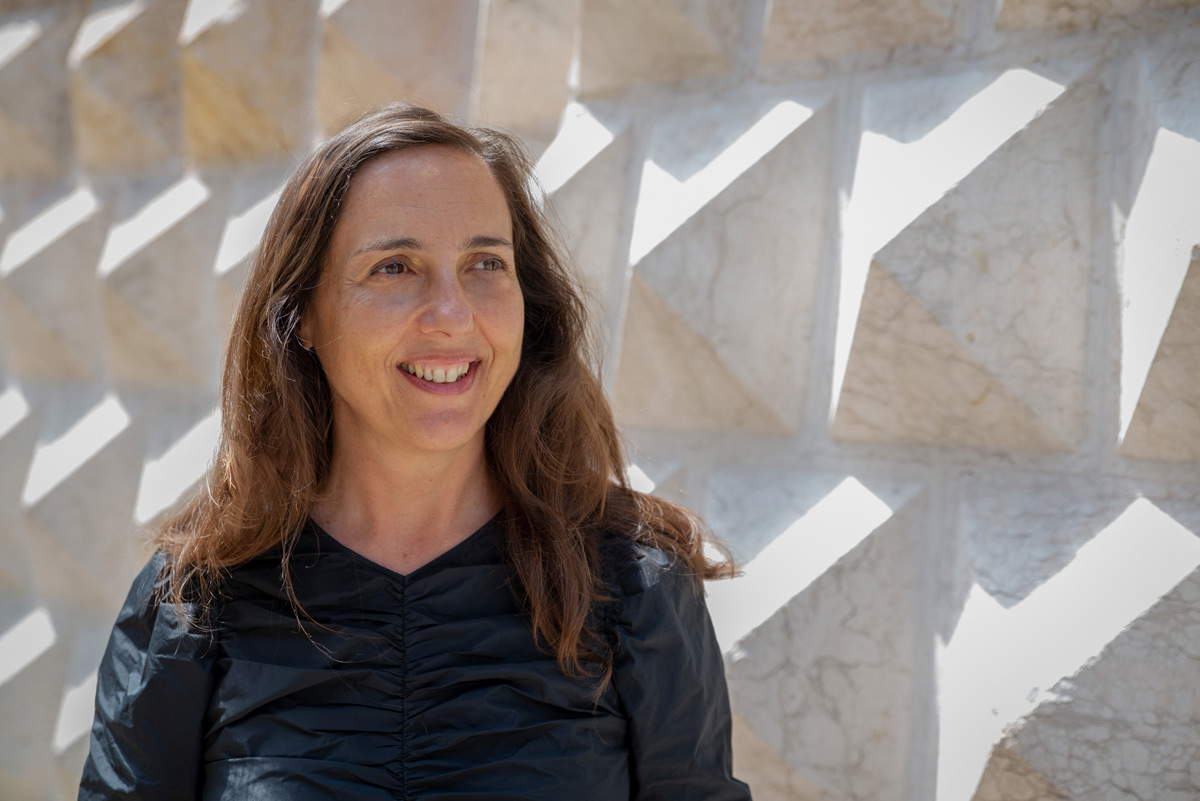 |
| Maria Luisa Pacelli. Ph. Credit Ferrara Art Foundation |
FG. Let’s take a closer look at the Palazzo dei Diamanti model, which is seen from many quarters as a landmark, since quality exhibitions are organized here and which also manage to attract large audiences. This is clearly a winning model, because this is how it has been going since the 1990s. What are the secrets of this success?
MLP. When the Ferrara Arte Foundation was created, it was set up as a totally public s.p.a., and through it, the Ferrara city government was equipping itself with a tool to be able to work in the field of art exhibitions at the international level, with a more streamlined instrument than an institution hinged completely in the local government could be. Over the years, Ferrara Arte has worked closely with the Gallerie d’Arte Moderna e Contemporanea, thus with a civic museum in Ferrara, and from my point of view the winning aspect of this team comes from the fact that a public museum, thus with collections and with all the sensitivities that a public institution can have towards heritage, has been combined with a structure that is also public but is more streamlined from an operational point of view and with a somewhat entrepreneurial outlook. However, this talk of entrepreneurship should be understood in a specific way: it does not mean that, through the activity of Ferrara Arte, the City and the Province, which were the founding partners of the s.p.a., intended to make profits; rather, they simply wanted to propose and make work a model that would make an exquisitely cultural activity sustainable for the city, where “sustainable” means a model that, through the income from the exhibitions and the bookshop, is able to have a high percentage of self-financing, and at the same time responds to the needs of the local community, so that the investment that the public entity makes on this institution is understandable and welcome in various spheres. For example, in the sphere of tourism: it is therefore a matter of reaching a number of visitors that can contribute to the city’s tourism development, but also to the image of Ferrara as a city of art and culture, and thus consolidating an imaginary around the city. But that is not all: it is also, for example, a matter of responding to the needs of the school world (with a very large and very well-designed activity), or of studying and enhancing the local heritage through exhibitions. In particular, the increased focus on the latter two aspects, that is, on making sure that the activities of the Palazzo dei Diamanti and Ferrara Arte were aimed not only at potential tourists or visitors who come from outside, but also at local communities in the various directions mentioned earlier, has been a particular commitment of mine since I became responsible for both the museums and the Palazzo dei Diamanti.
One of the most interesting features of the Palazzo dei Diamanti model is to make, precisely, more specialized exhibitions sustainable (the last example that comes to mind is the monograph on Carlo Bononi), through more “popular” (but still of quality) reviews, such as the one on GaudÃ’s Barcelona, to mention one of the latest. In your opinion, can this model be exportable to other realities, given that it is almost unique?
From the beginning the model was sewn on a Ferrara reality, but this does not mean that the objectives and even some of the operational methodologies of Ferrara Arte cannot be reproduced elsewhere. It must be said that Ferrara Arte’s is an exceptional model in our country, because abroad most institutions that do exhibitions operate as we do: there is nothing strange or ingenious about what we do, in my opinion it is the activity that a museum should do. That is to take care of its collections, to have alongside the activity on heritage an activity such as exhibitions, which are quality exhibitions because they are thought out, studied and coordinated by a museum staff and not by an agency that does it to make a profit, and which then also try to respond to the needs of the community in the sense I was saying before. However, I really want to emphasize that the exhibitions of Palazzo dei Diamanti are the exhibitions of a museum or a museum system: when we organize, for example, the exhibition on Boldini, we are organizing an exhibition on an artist from our collections, trying not to do, moreover, the usual exhibition on Boldini, for various reasons (first, because we are really interested in studying this artist and bringing out aspects that have not been highlighted so far, and then also because consolidating the reputation, image and knowledge of Boldini makes it beneficial for museums). When the Boldini Museum is finally reopened, the fact that we have studied and promoted the artist through a number of exhibitions will mean that the museum will have an already somewhat solid feedback, knowledge, and interest. This is the same operation that we have done on other artists such as Michelangelo Antonioni or such as Carlo Bononi: the latter is not part of our collections, but he is nevertheless an important Ferrara artist who needed to be studied. And in conjunction with that exhibition we also carried out work on Ferrara of the seventeenth century, directed not only to the study of an era that for reasons all Ferrara has been somewhat forgotten (in the sense that it seems that after the Devolution nothing happened in Ferrara, when in fact there is a very interesting seventeenth century here as well), but that also allowed us to activate itineraries that had never been thought of: training was also done with local tour guides, who were provided with elements to understand what seventeenth-century Ferrara meant, and this work could therefore also be useful to that sector, as well as to schools and scholars.
So there are several positive spin-offs of the Palazzo dei Diamanti’s activities. Let us start with those on tourism: Ferrara has become a popular destination for tourists also thanks to the Palazzo dei Diamanti. It would be interesting to know what weight tourist attractiveness has in decision-making policies on the institute’s activity.
The Ferrara city administration at one point transformed the s.p.a. into a foundation and then tied the funding of Ferrara Arte exhibitions to the tourist tax: it is clear that, whether we want to or not, the relationship with the tourism sector is very strong because part of the funding comes from that area. There are no recent studies that can give an exact picture of the impact and induced impact in numerical terms, however, it must be said that in the last ten years Ferrara Arte, with its fifty exhibitions, has recorded 1,365,843 visitors. This is from 2008 to 2018. So clearly there has been an impact, and to get a clearer picture, in our interviews with the public we also ask how many overnight stays they have and similar information. What I would like to emphasize, on the topic of how the activity of the Palazzo dei Diamanti can affect tourism, is that the effects and spillovers subsist not only for those who arrive here in the day or those who stay overnight, but also for the consolidation of an imaginary related to Ferrara. Ferrara is an architecturally and urbanistically unique, splendid city that has emergencies such as the Castello Estense, such as the Palazzo Schifanoia, such as the Cathedral, such as Corso Ercole I, but it is not a city like Venice, like Florence or like Pisa, which count on attractors capable of generating an automatic flow of tourism (think of the Tower of Pisa): it is a city that over the years has consolidated a reputation thanks to its beauty, but also thanks to the exhibitions and the activities that are done around the exhibitions. That is, the moment a person comes here and sees an interesting exhibition, they associate the name of the city with this product and its quality. Also, when we advertise the exhibition or when an article comes out in a newspaper or a report on television that talks about the exhibitions, somehow Ferrara is always mentioned as well. This in my opinion is very important within the tourism discourse.
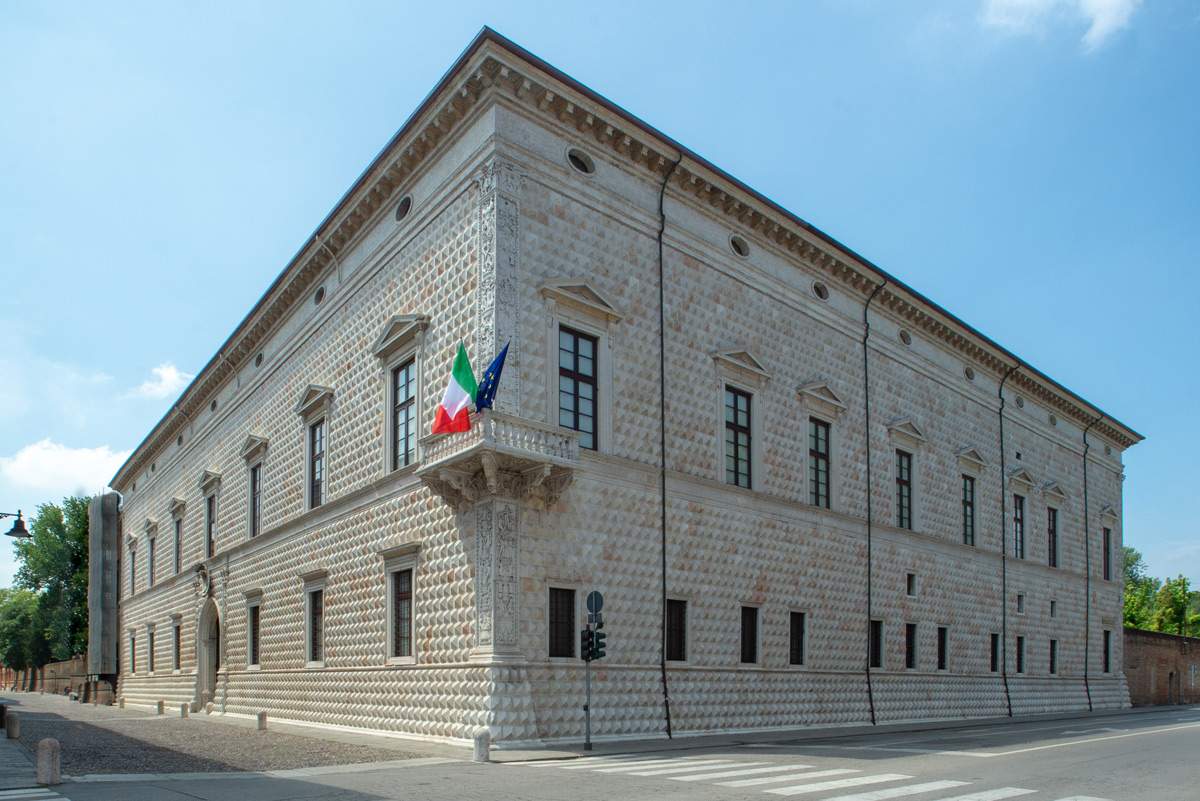 |
| Palazzo dei Diamanti in Ferrara. Ph. Credit Ferrara Art Foundation |
We talked about interviews that are done with visitors. This is something that is often blamed on state museums, in the sense that they do not conduct in-depth studies to get to know and profile their audiences. The situation is obviously very different in municipal museums, where each follows its own policies, for better or worse. Yours is undoubtedly a positive case in this sense as well: how do you study the public and what kind of surveys do you conduct on the public?
We conduct interviews on a sample of around 4 percent of visitors to individual exhibitions. Let me preface this by saying that these are not specialized surveys (they would be unaffordable for us), but we still draw on more than 20 years’ experience on this kind of research. What we do is not only read the result of the interviews about the exhibition, but compare it with those of previous years. We derive several data from the interviews. For example, the origin of the audience (regions and cities, with the various percentages), we ask if the visitors came to Ferrara specifically to visit the exhibition, we ask how the audience came to know about the exhibition (and we need this to set up our advertising campaigns and understand the orientation of the audience in this regard), how they feel about the exhibition, whether the visitor is a first-time visitor or part of a loyal audience, whether they have visited other Ferrara museums (if not, whether they plan to visit them), whether they sleep in the city and if so in what facilities (hotels, B&Bs, at friends’, and so on), whether they plan to be informed about activities in the future, and more. We also have an important history on this data, because these are surveys that, as mentioned, we have been doing for two decades.
So we have talked about the spillover to the public coming from outside, so now it is interesting to delve into the spillover to the citizens. You also recently reiterated that Palazzo dei Diamanti is a heritage of the people of Ferrara: but what relationship do the inhabitants have with Palazzo dei Diamanti, how do they experience it? Do they feel it is part of their DNA or, as sometimes happens in certain realities, is there a kind of detachment? What spin-offs does the Palazzo dei Diamanti provide socially for the city?
Obviously it is difficult for me to speak for all Ferrara residents, but I can say what my impression is. Certainly over the years a very strong pact has been created with the world of schools and teachers: the educational projects are very participatory and among other things are built in an open dialogue with all the operators (with the schools, with those who carry out special visits, with the tour guides, who have been given specific training to talk to school children). All of this creates professional and loyalty ties that affect a well-defined portion of the city, and also growth of young citizens, with regard to a sector like ours. I have to say that side activities such as conferences are always well attended as well: when we did special activities such as the unabridged reading ofOrlando Furioso there was extraordinary participation. And the openings themselves are very well attended. On the other hand, seeing also the results of the statistical surveys that the municipality does on the results of the action of the various sectors of local government, culture always has very high approval rates, so I think there is an important link with the city. It is clear that there are critical issues, and the main one is the fact that in 2012 there was an earthquake that with many difficulties Palazzo dei Diamanti managed to overcome, going on with its exhibition activities, but many museums are still closed for restoration and will be closed for a few more years, and this is mainly due to bureaucratic delays: in this case the citizenry is often not aware that these delays had reasons... and this is a weak point in the area of relations with the inhabitants.
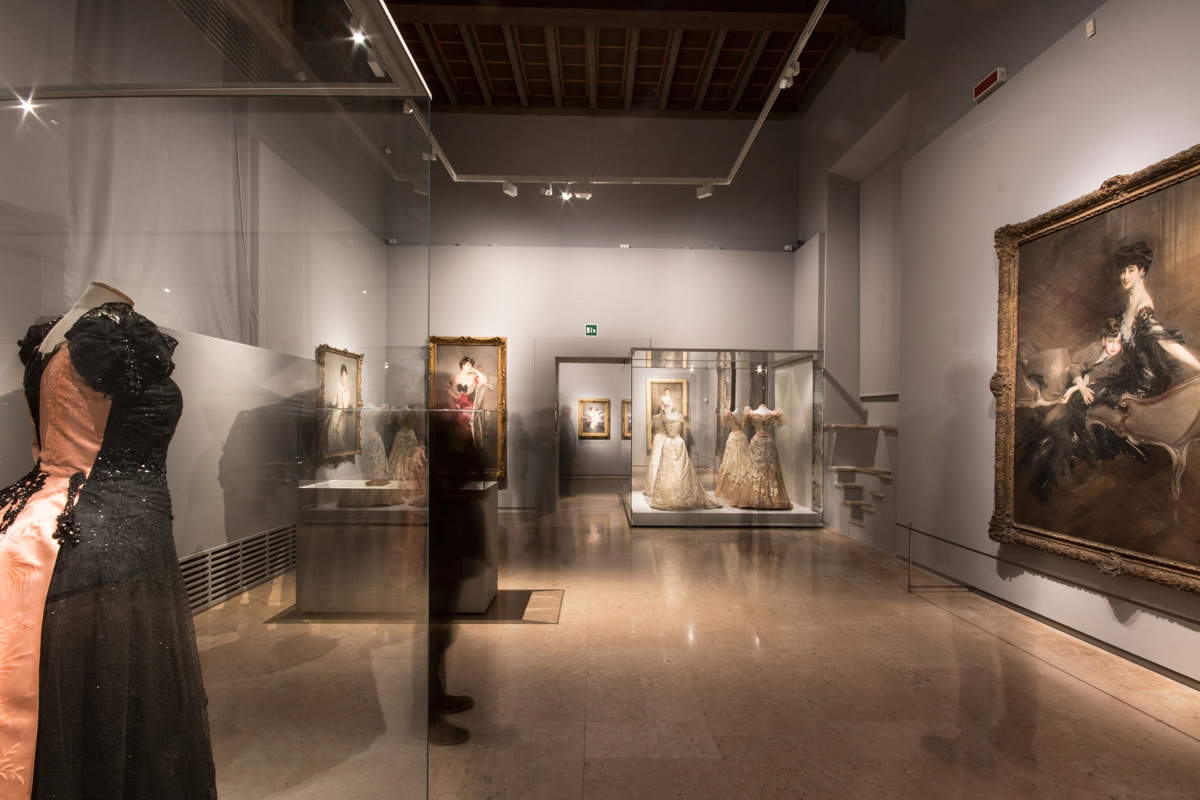 |
| Image from the exhibition Boldini and Fashion (2019). Ph. Credit Ferrara Art Foundation |
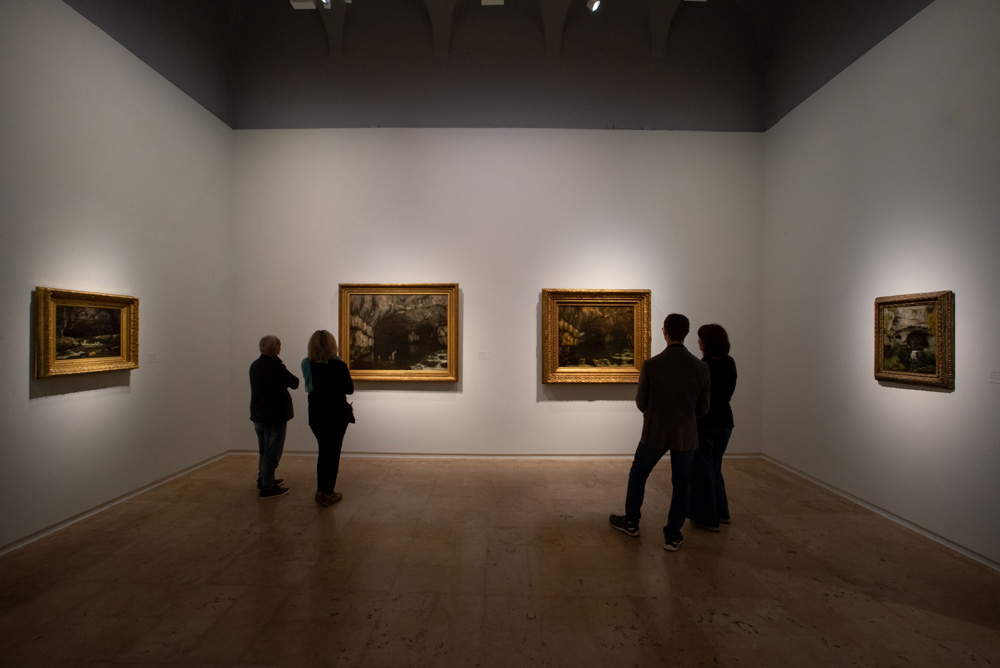 |
| Image of the exhibition Courbet and nature (2018-2019). Ph. Credit Ferrara Arte Foundation |
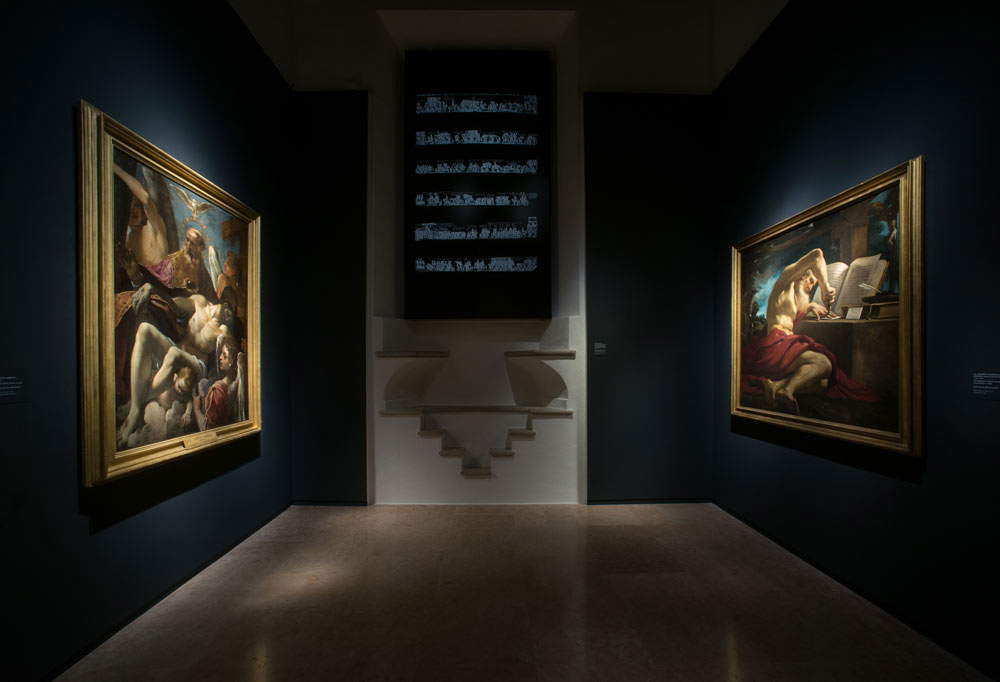 |
| Image of the exhibition Carlo Bononi. The last dreamer of the Ferrara workshop (2017-2018). Ph. Credit Ferrara Arte Foundation |
Incidentally, still thinking about the city, it must be said that Palazzo dei Diamanti is at the center of a vast system of museums where, however, governance is very different: the most glaring case is that of the National Art Gallery of Ferrara, which occupies a wing of Palazzo dei Diamanti but is run by the state. Are the various entities that animate culture in Ferrara doing enough to create synergies?
Certainly more can be done. Let’s say that our position is one of extreme openness from this point of view: often we, as Gallerie d’Arte Moderna e Contemporanea and as Palazzo dei Diamanti, have asked for common tables on specific projects (for example, for theOrlando F urioso exhibition, a table was made not only with the city museums, to understand how each museum could be associated with initiatives related toOrlando Furioso, but also, for example, with the institution Teatro Comunale di Ferrara, which has programmed some very important shows, or with Ferrara Musica, which has programmed concerts): so certainly there is a great disposition and inclination toward wills that can create an integrated system. Certainly there are also difficulties due to the fact that different competencies, the municipal and the state, are sometimes divided by administrative and bureaucratic barriers that are really complex to overcome. But we work to overcome them. Now for example we have established an integrated ticket with the Pinacoteca, the Pinacoteca often hosts our conferences, we have worked on some common projects, but more must and will have to be done. Ferrara Arte’s vision in the near future is to work on the whole museum system, not just the Gallery of Modern Art.
To give life to important events such as those at the Palazzo dei Diamanti always requires an international dialogue involving institutions scattered around the world. How have you worked over the years to carve out this role as an international interlocutor and to weave your network of relationships?
One thing that my predecessor, Andrea Buzzoni, who had the idea, together with the administration at the time, of founding Ferrara Arte, understood very well was to give the institution a structure similar to that of Anglo-Saxon museums. This, at the operational level, activated a dialogue and an understanding, because there were similar professorships that did not exist in Italy or existed in very limited ways from the very beginning, which also made it possible to overcome a real prejudice against the Italian museum sector, and this also made it possible to be able to establish international collaborations for the realization of certain projects, making it possible for our structure to be known not only for what it did and how it dealt with certain aspects of the work (for example, loans ... and we know that an international loan can sometimes be a very sensitive subject), but also for the personal relationships it was able to establish between professionals. Then it happened that Ferrara Arte, which is also a publisher (we do the catalogs in-house and I would like to emphasize that our way of working guarantees very detailed controls on what we do), was also involved in international publishing partnerships (for example, we took care of a Tate Britain catalog when we organized an exhibition together with them). Therefore, a structure that was initially modeled after the example of Anglo-Saxon museums, with figures who were able to converse with foreign countries, and a professionalism that was recognized not only at the scientific level but also at the technical level, meant that professional alliances and friendships were forged, and that projects carried out together with international museums were set off. And this has allowed us to position ourselves on a championship that would perhaps not be our own: Buzzoni used to say that we were a Cinquecento racing in Formula One.
Are there aspects on which Palazzo dei Diamanti could work, on which you now feel you are not at the top but on which you feel you should invest in the future?
Definitely on improving services, on creating a structure that is not only interesting in terms of content but also welcoming, as is the case in major international museums-I think this choice of having very ambitious models has been very fulfilling, and in my opinion it is also fulfilling in the area of reception, fruition, the experience of the visit that a visitor to a Palazzo dei Diamanti exhibition can have. And the experience can be extended even further: think, for example, of the creation of itineraries in the city. These are definitely aspects on which we can grow.
To conclude, what are the challenges that, in the immediate future, Palazzo dei Diamanti will face a year from now?
Facing a different scenario than the one we imagined, with a start of the redevelopment of Palazzo dei Diamanti in September: this will not happen, but some work will start, albeit next year and in a reduced form. So the challenge is to rethink programming that can partly coexist with a construction site, in a very short time. A big challenge because characteristic of our projects, especially the most successful ones, is that we prepare them three or four years in advance. So the challenge is to maintain quality in the given situation.
Warning: the translation into English of the original Italian article was created using automatic tools. We undertake to review all articles, but we do not guarantee the total absence of inaccuracies in the translation due to the program. You can find the original by clicking on the ITA button. If you find any mistake,please contact us.





























